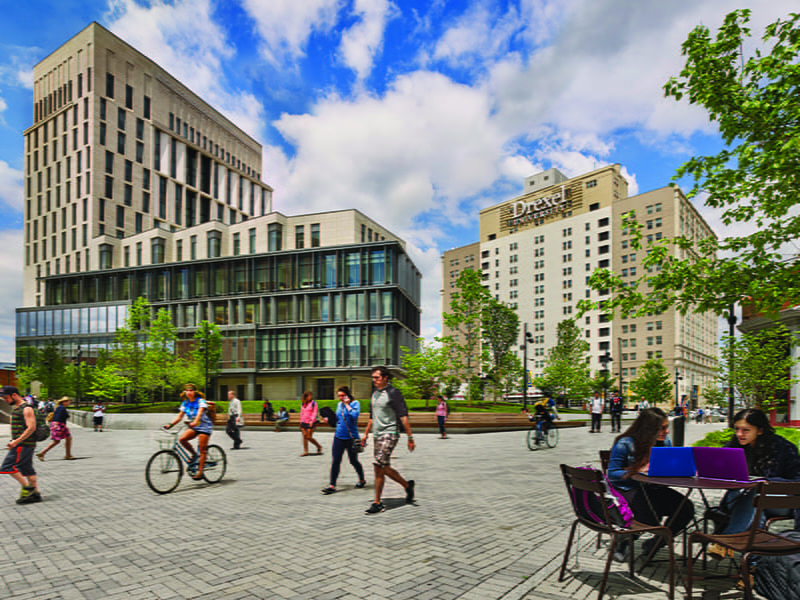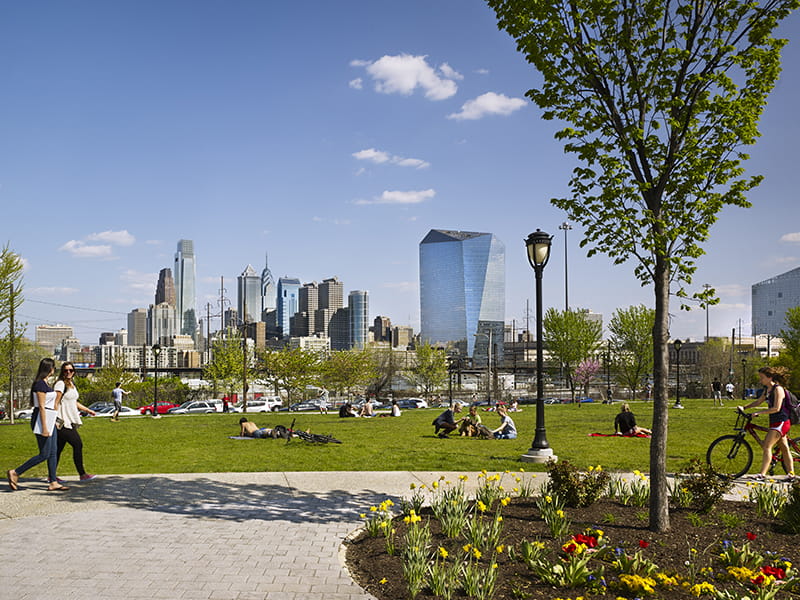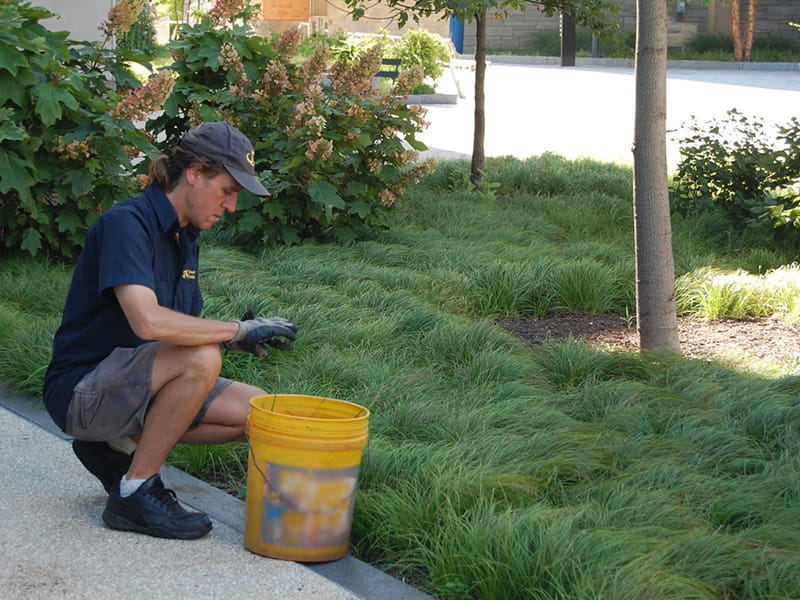Award-Winning Grounds Maintenance
Buildings and Landscapes

Drexel was the first university in the country to commit to using Green Globes®, the Green Building Initiative's™ independent environmental impact monitoring system, for all major new construction. Highlighted below are sustainable features incorporated into Drexel's built environment.
Biowall and Green Roofs
The 150,000 square-foot Constantine N. Papadakis Integrated Sciences Building (PISB), located at the northeast corner of 33rd and Chestnut streets, was certified LEED Gold by the U.S. Green Building Council. The building's interior contains North America's largest living biowall, a 75-foot high wall of plants that serves as a natural biological air filter, coolant and humidifier, as well as a research tool for students and professors.

Gerri C. LeBow Hall, located at 32nd and Market streets, is a 12-story, 177,500 square-foot building that features large, integrated green roofs, high-efficiency mechanical equipment, low-flow plumbing fixtures, and sensors to control artificial lighting.
Millennium Hall, a student residence hall, also uses a green roof to insulate the building, manage storm water and reduce the roof's heat island effect. Additionally, this building integrates other water-saving mechanisms such as low-flow toilets and shower heads.

Enhancing the Public Realm
Inviting outdoor spaces draw the public together and facilitate connections between people and their environment. Open space is at a premium at urban universities, and Drexel strives to maximize this space, making it welcoming and user-friendly. The Korman Quad and the Raymond G. Perelman Plaza unify a large block (bounded by 33rd Street to the west, 32nd Street to the east, Market Street to the north and Chestnut Street to the south), by integrating pedestrian-friendly spaces with large canopy trees, understory trees, native landscapes, outdoor seating and walkways.
Together, these renovated outdoor spaces have become a unified "hub" of campus activity. Completion of the Korman Quad and Perelman Plaza achieved several sustainability improvements. These improvements include: approximately 70 percent more green space; a 93 percent reduction in impervious surfaces (combination of planting/lawn areas and porous paving); 1,392,000 gallons of water per year diverted from or slowly released to the sewer, helping to reduce combined sewer overflows within the watershed; and 144 native trees and 40,527 native groundcover and shrubs.

Brownfield Redevelopment
Drexel Park, located at 32nd Street and Powelton Avenue, was once a 2.5-acre industrial site. Now an open green space with more than 45 trees, it provides recreational facilities, walking paths, and benches for Drexel students and the neighboring community.
Rainwater Reuse
Select Drexel buildings, such as the Recreation Center at 33rd and Market streets, have comprehensive rainwater reuse systems to help manage storm water and reduce the amount of potable water used for flushing toilets.
Sustainable Irrigation Systems
Irrigation systems throughout campus use sensors to measure moisture in the soil to activate zoned sprinklers, without the use of automatic timers. As a result, water is used only when needed, providing better control of water use.

Maintaining native landscapes on campus
Landscaping and Grounds
The Grounds Department strives to use organic landscaping practices whenever feasible and collaborates with project managers to ensure sustainable and native plants are selected for new installations. The Department outsources composting to third-party vendors to reduce landfill waste. Software is used to maintain an active tree inventory via GPS mapping, which allows the University to make informed decisions on future plantings, while maintaining an optimum level of biodiversity. All mowers are equipped with mulching kits to keep grass clippings in place, which prevents nitrogen in the blades of grass from breaking down and leaching into storm sewers. The Department also uses several pieces of battery-powered lawn equipment to reduce carbon emissions.
Recycled Synthetic Turf Material
The Vidas and Buckley recreation fields are synthetic turf with a grass-like appearance and 100 percent recycled rubber infill. The turf sits on drain board material to provide rainwater drainage.